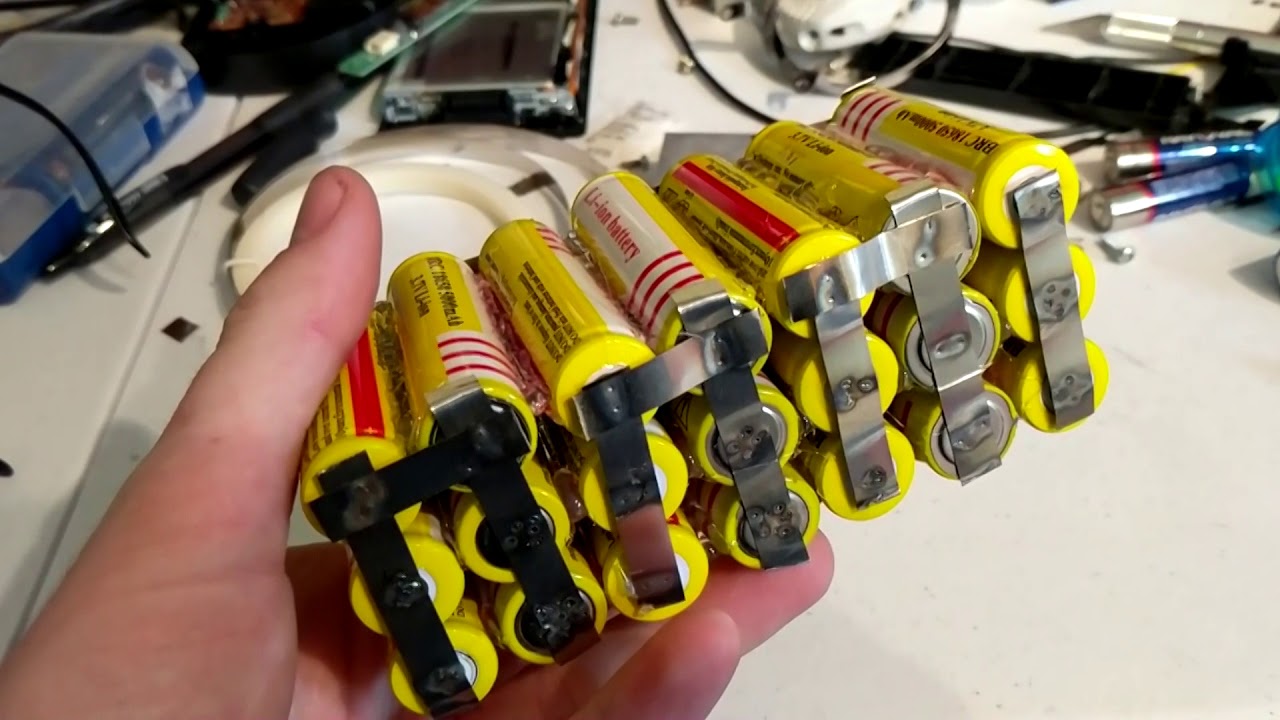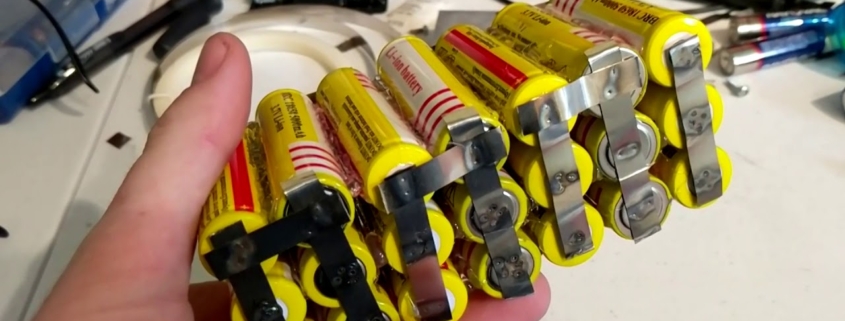How to Calculate Ah of 18650 Battery Pack: Ultimate Guide
Want to build a custom battery pack using 18650 lithium-ion cells?
Then you need to know how to calculate the Ampere-hour (Ah) capacity of your battery pack.
Why?
Because the Ah rating tells you how much charge your pack can hold and how long it can power your device.
In this guide, as a professional 18650 battery pack manufacturer, I’ll show you exactly how to calculate the Ah of a 18650 battery pack, step-by-step.
Let’s dive right in.

What is Ah and Why It Matters
Ampere-hour (Ah) is a unit that measures a battery’s capacity.
Think of it as your battery’s fuel tank.
For example, a battery with 3.0Ah capacity can theoretically provide:
3.0 amps for one hour
1.5 amps for two hours
0.5 amps for six hours
You get the idea.
For 18650 batteries, individual cells typically have capacities between 2.5Ah and 3.5Ah. When you combine these cells in a pack, the total capacity depends on how they’re connected.
And that’s what we’re going to cover today.
The Basics of 18650 Batteries in 2025
First things first: what exactly is an 18650 battery?
The 18650 is a standard lithium-ion battery, named for its dimensions: 18mm in diameter and 65mm in height.
These batteries are everywhere:
Electric vehicles
Power tools
Laptop batteries
DIY power banks
Here are the key specs of a typical 18650 cell:
Nominal Voltage: 3.6V-3.7V
Capacity: Between 2,500mAh (2.5Ah) and 3,500mAh (3.5Ah)
Now, the big question is: how do you combine these cells to get the voltage and capacity you need?
That’s where series and parallel connections come in.
Series vs. Parallel Connections (The Foundation of Battery Math)
Here’s the thing:
How you connect your 18650 cells completely changes your battery pack’s specs.
Let me break this down:
Series Connection (S)
When you connect batteries in series:
Voltages add up
Capacity stays the same
Here’s the formula:
Total Voltage = Number of Cells in Series × Voltage of One Cell
For example, a 2S1P pack (two cells in series) with 3.7V cells would have:
Total voltage: 7.4V (2 × 3.7V)
Total capacity: Same as one cell (let’s say 3.0Ah)
Parallel Connection (P)
When you connect batteries in parallel:
Capacity adds up
Voltage stays the same
Here’s the formula:
Total Capacity (Ah) = Number of Cells in Parallel × Capacity of One Cell
For example, a 1S2P pack (two cells in parallel) with 3.0Ah cells would have:
Total voltage: 3.7V (same as one cell)
Total capacity: 6.0Ah (2 × 3.0Ah)
Series-Parallel Connection (e.g., 3S2P)
This is where things get interesting.
A series-parallel connection combines both configurations to achieve your desired voltage AND capacity.
For instance, a 3S2P pack with 3.7V, 3.0Ah cells would have:
Total voltage: 11.1V (3 × 3.7V)
Total capacity: 6.0Ah (2 × 3.0Ah)
Understanding these configurations is crucial for accurately calculating your battery pack’s specs.
How to Calculate Total Voltage and Ah (Step-by-Step)
Now let’s get to the practical part.
Here’s a step-by-step process for calculating your 18650 battery pack’s voltage and Ah rating:
Step 1: Determine Individual Cell Specs
Find the capacity and voltage of each 18650 cell you’re using. This information is typically provided by the manufacturer and may be printed on the cell.
For example: Samsung 30Q cells have 3.6V nominal voltage and 3.0Ah capacity.
Step 2: Identify Your Configuration
Decide how many cells you’ll connect in series and how many in parallel based on your voltage and capacity needs.
For example: If you need a pack with approximately 12V and 9.0Ah, you might choose a 3S3P configuration (3 series × 3 parallel = 9 cells total).
Step 3: Apply the Calculation Formula
Now, use these simple formulas:
Total Voltage = Number of Cells in Series × Voltage of One Cell
Total Capacity (Ah) = Number of Cells in Parallel × Capacity of One Cell
Let’s see this in action with some real-world examples.
Practical Examples (This is Where Things Get Clear)
Let me show you how this works with some practical examples:
Example 1: 2S1P Configuration
Cells: 2 cells, each 3.7V and 3.0Ah
Configuration: 2S1P (2 in series, 1 in parallel)
Calculation:
Total Voltage = 2 × 3.7V = 7.4V
Total Ah = 1 × 3.0Ah = 3.0Ah
Result: The pack has 7.4V and 3.0Ah
Example 2: 1S3P Configuration
Cells: 3 cells, each 3.6V and 2.5Ah
Configuration: 1S3P (1 in series, 3 in parallel)
Calculation:
Total Voltage = 1 × 3.6V = 3.6V
Total Ah = 3 × 2.5Ah = 7.5Ah
Result: The pack has 3.6V and 7.5Ah
Example 3: 4S2P Configuration
Cells: 8 cells, each 3.7V and 3.0Ah
Configuration: 4S2P (4 in series, 2 in parallel)
Calculation:
Total Voltage = 4 × 3.7V = 14.8V
Total Ah = 2 × 3.0Ah = 6.0Ah
Result: The pack has 14.8V and 6.0Ah
Pro Tip: Want to calculate the total energy in your battery pack? Just multiply the total voltage by the total capacity:
Energy (Wh) = Voltage (V) × Capacity (Ah)
For the 4S2P example above: 14.8V × 6.0Ah = 88.8Wh
Calculating Ah for Real-World Applications in 2025
Now let’s tackle some practical scenarios you might encounter in 2025:
Building an E-Bike Battery
Let’s say you want to build a battery for an electric bike that requires:
36V nominal voltage
At least 10Ah capacity
How many 18650 cells (3.7V, 3.0Ah each) would you need?
For 36V, you need: 36V ÷ 3.7V ≈ 10 cells in series
For 10Ah, you need: 10Ah ÷ 3.0Ah ≈ 4 cells in parallel
Total configuration: 10S4P
Total cells needed: 10 × 4 = 40 cells
Final specs: 37V and 12Ah
DIY Power Bank for Camping
You want to create a portable power bank for camping that can recharge your devices multiple times:
Using 3.6V, 3.5Ah cells
You decide on a 4S3P configuration (12 cells total)
Total voltage: 4 × 3.6V = 14.4V
Total capacity: 3 × 3.5Ah = 10.5Ah
Total energy: 14.4V × 10.5Ah = 151.2Wh
This is enough to recharge a typical smartphone about 15 times or run a small LED camping light for several nights.
Common Mistakes to Avoid When Calculating Battery Capacity
Here are some common mistakes I see people make when calculating their battery pack’s Ah:
Mistake #1: Confusing mAh and Ah
Many 18650 cells list their capacity in milliampere-hours (mAh). To convert to Ah, simply divide by 1000.
For example: 2500mAh = 2.5Ah
Mistake #2: Not Accounting for Discharge Rate
The rated capacity of a battery is typically measured at a low discharge rate (like 0.2C). When you draw more current, the effective capacity drops.
For example, a 3.0Ah cell might only deliver 2.7Ah when discharged at 1C rate (3 amps).
Mistake #3: Mixing Different Cells
Using cells with different capacities in the same parallel group will result in the lowest common capacity. Always use identical cells for optimal performance and safety.
Safety Considerations and Battery Management System (BMS)
Look:
Safety is SUPER important when working with lithium-ion batteries.
These batteries can catch fire or even explode if not handled properly. That’s why you need to incorporate a Battery Management System (BMS) into your pack.
A BMS performs several critical functions:
Monitors individual cell voltages
Prevents overcharging and over-discharging
Ensures balanced charging across all cells
Protects against short circuits
Prevents thermal runaway
Most consumer battery packs include a BMS with a cutoff voltage between 2.8V and 3.0V per cell to prevent damage.
Here are some additional safety tips:
Use high-quality cells from reputable manufacturers like Samsung, LG, Sony, or Panasonic
Never mix cells with different capacities or charge levels
Store and handle batteries in a cool, dry environment
Use proper spot welding (never solder directly to cells)
Always wear safety equipment when building battery packs
Verifying Your Calculations in the Real World
Here’s the thing:
Theoretical calculations are great, but it’s always good to verify your results.
Here’s how to test your battery pack’s actual capacity:
Fully charge your pack
Use a controlled discharge rate (typically 0.2C)
Measure the total energy delivered
Compare with your calculations
For example, if your 6.0Ah pack delivers 5.8Ah in a discharge test, that’s pretty close to the theoretical value (and normal due to internal resistance and other factors).
In Summary
Let’s wrap this up.
Calculating the Ah capacity of your 18650 battery pack boils down to this simple formula:
Total Capacity (Ah) = Number of Cells in Parallel × Individual Cell Capacity
Remember these key points:
Series connections (S) increase voltage but not capacity
Parallel connections (P) increase capacity but not voltage
Series-parallel combinations (SxP) increase both
Always include a BMS for safety
Use matched, high-quality cells
By understanding these principles, you can design a custom 18650 battery pack that meets your exact voltage and capacity requirements.
The best part? Once you master this, you can build battery packs for virtually any application – from powering your DIY electronics projects to creating backup power for your home.
Have you built a battery pack using 18650 cells? Let me know your experience in the comments!
Remember: safety first. Always follow proper handling procedures when working with lithium-ion batteries. And if you’re not confident in your skills, consider buying a pre-made battery pack instead of building one yourself.








